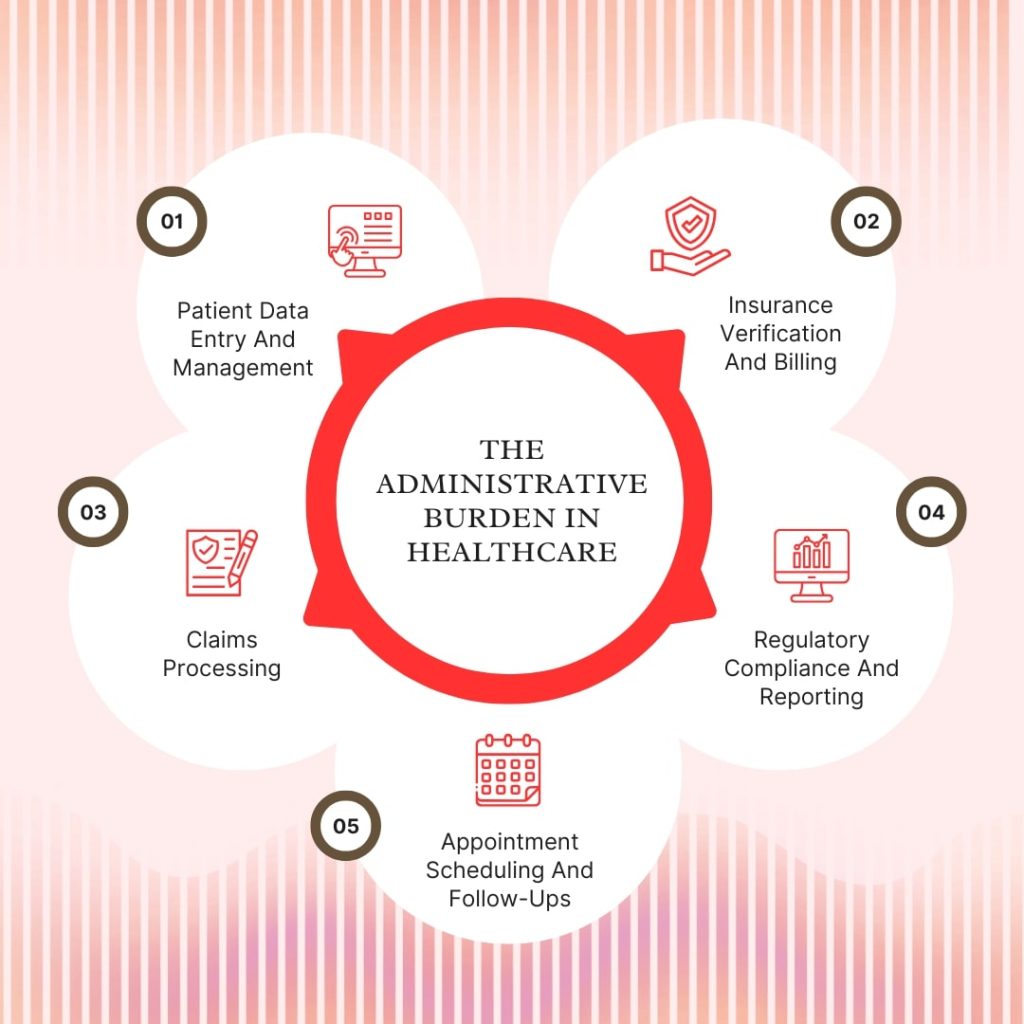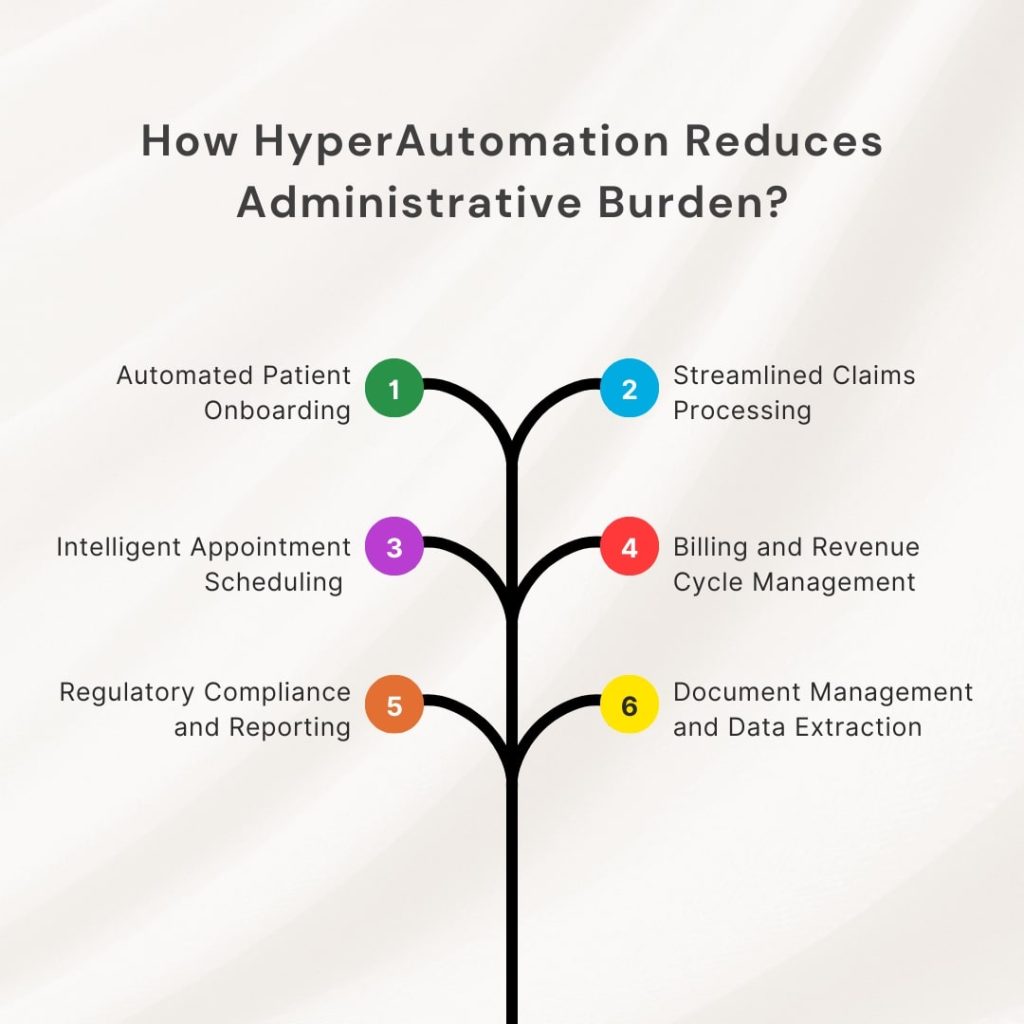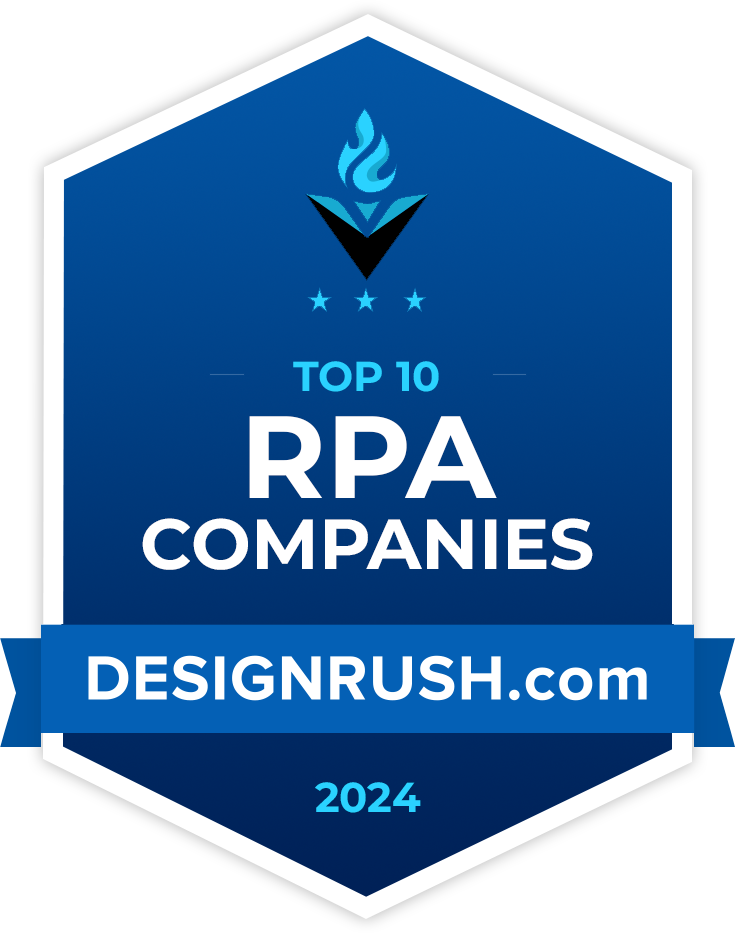
Key Takeaways
- HyperAutomation eliminates repetitive administrative tasks in healthcare, allowing staff to focus on patient care by integrating AI, RPA, and ML for seamless, accurate operations.
- Administrative burdens like data entry, claims, and billing consume time and resources. HyperAutomation streamlines these tasks, improving accuracy, reducing costs, and preventing staff burnout.
- AI-powered onboarding and scheduling enhance patient experience, reduce human errors, and accelerate service delivery by digitizing forms, verifying insurance, and automating appointment management.
- HyperAutomation ensures compliance and better data management, enabling accurate reporting, secure handling of sensitive information, and reducing risks related to regulatory penalties and data breaches.
- Healthcare organizations gain financial and operational efficiency through automated claims, billing, and coding processes, which result in faster reimbursements, lower denial rates, and reduced revenue leakage.
The healthcare sector is experiencing profound change due to increased patient requirements and escalating operational rates. Currently, patients seek immediate care at reasonable costs. However, healthcare providers face immense challenges in fulfilling these requirements. From managing resources to providing top care, healthcare providers have so much going on. Hence, the best solution to avoid such situations is HyperAutomation. It is a valuable strategy that integrates numerous technologies to improve service delivery.
HyperAutomation is different from conventional automation. It utilizes the latest technologies, including intelligent document processing, machine learning, and robotic process automation, to enable end-to-end automation. It helps healthcare experts eliminate redundant tasks and shorten administrative procedures. From claims management to scheduling an appointment with the doctor, HyperAutomation allows the staff to focus on patient-centric activities without worrying about anything.
Another significant benefit of HyperAutomation in healthcare is lessening the administrative burden. Usually, some of the healthcare funds are taken from non-clinical tasks. By automating repetitive tasks, healthcare settings can not only reduce the unwanted costs but also mitigate burnout among the staff. For example, an AI-powered bot can extract data from unstructured documents, manage inquiries related to billing, etc., that would otherwise take a lot of time. Hyperautomation is a necessity today. As industries prioritize immediate care, utilizing automation is the key.
Also read: How Does AI-Augmented RPA Improve Automation Resilience with ML?
The Administrative Burden in Healthcare
In most healthcare settings, administrative tasks consume hours, human resources, and time. A 2022 study by JAMA said that administrative costs account for almost twenty-five percent of the total hospital spending in the US. This states that healthcare providers need to think about correctly managing non-clinical tasks. Even though administrative procedures are fundamental to patient engagement and revenue cycle management, they sometimes create bottlenecks. All the burden falls on support and clinical staff members, distracting them from patient care.
Some of the most common burdens disturbing the healthcare settings are listed below:

1. Patient data entry and management
Manually handling patient data, from registration to updating medical histories, is time-consuming and susceptible to errors. Inaccurate data entry can result in misdiagnoses, treatment delays, or billing discrepancies.
2. Insurance verification and billing
Healthcare staff often spend hours verifying insurance eligibility, interpreting policy details, and managing pre-authorizations. This repetitive process is critical yet highly inefficient when performed manually.
3. Claims processing
Submitting and tracking insurance claims involves multiple steps, including coding, documentation, and follow-up. Errors or delays in this process can lead to claim denials, delayed reimbursements, and revenue leakage.
4. Appointment scheduling and follow-ups
Managing appointments and ensuring patients attend follow-ups involves coordination, reminders, and rescheduling—tasks that, when done manually, are prone to miscommunication and missed opportunities.
5. Regulatory compliance and reporting
Healthcare providers must adhere to stringent regulations like HIPAA, HITECH, and various payer-specific requirements. Ensuring consistent documentation and timely reporting places additional strain on administrative teams.
These routine yet critical functions drain resources, contribute to staff burnout, and reduce the time available for patient interaction, In a field where every second counts, inefficiencies in administrative workflows can directly impact patient outcomes and institutional profitability.
Enter HyperAutomation
By integrating advanced technologies like RPA, AI, ML, and IDP, healthcare organizations can reimagine administrative operations from the ground up. For example, AI-driven bots can automatically extract and input patient data from forms into electronic health records (EHRs) with unmatched accuracy. RPA can streamline claims processing by automating coding, validation, and submission steps, dramatically reducing turnaround times and minimizing denials. IDP can digitize and structure unstructured documents, such as referrals or insurance forms, eliminating manual data entry.
The result? Faster processes, fewer errors, improved compliance, and most importantly, relief for overburdened staff. With these technologies working behind the scenes, clinical teams can focus on delivering high-quality care, improving the overall patient experience, and driving better health outcomes.
How HyperAutomation Reduces Administrative Burden?
HyperAutomation is transforming the administrative backbone of healthcare by eliminating tedious, repetitive tasks and enabling faster, more accurate operations. Here’s a breakdown of how HyperAutomation addresses key administrative pain points:

1. Automated Patient Onboarding
The traditional patient onboarding process is often slow and paper-heavy, involving manual form-filling, insurance verification, and data entry into Electronic Health Records (EHRs). HyperAutomation revolutionizes this process by digitizing intake forms, validating insurance in real-time, and auto-populating patient records in the EHR system. AI-powered chatbots can engage patients to collect personal details, symptoms, and medical history before their visit. This accelerates the onboarding process and reduces administrative overhead and human errors, improving the patient experience from the first interaction.
2. Streamlined Claims Processing
Medical claims processing involves multiple steps, each susceptible to human error and delays. HyperAutomation uses RPA to automate repetitive actions like data collection, form validation, and claims submission. AI and ML models can verify claim accuracy, ensure regulatory compliance, and flag anomalies for fraud prevention. These technologies drastically reduce the time it takes to process a claim and minimize the likelihood of rejections or denials. The result is faster reimbursements and improved cash flow for healthcare providers.
3. Intelligent Appointment Scheduling
Manual appointment scheduling is often inefficient and prone to overbooking or underutilization. AI algorithms can optimize scheduling by considering provider availability, patient preferences, and urgency of care. RPA bots can manage appointment confirmations, send reminders, and even handle cancellations or rescheduling autonomously. This leads to higher patient satisfaction, reduced administrative workload, and lower no-show rates—ensuring that healthcare resources are used effectively.
4. Billing and Revenue Cycle Management
Accurate billing is critical to maintaining financial health in any healthcare organization. HyperAutomation enhances revenue cycle management by automating charge capture, validating codes, and processing payments. NLP tools can extract relevant details from physician notes and clinical documentation to ensure precise coding, reducing the risk of claim denials. Automated billing accelerates revenue generation and minimizes revenue leakage and human error.
5. Regulatory Compliance and Reporting
Compliance with regulations such as HIPAA and HITECH is non-negotiable in healthcare. HyperAutomation ensures consistent and secure handling of sensitive patient data. It enables real-time audit trails, automated report generation, and standardized data formats to simplify regulatory submissions. These capabilities reduce the risk of non-compliance penalties and support a culture of accountability and transparency within the organization.
6. Document Management and Data Extraction
Healthcare environments are flooded with unstructured data from handwritten notes, scanned documents, lab reports, and imaging results. Intelligent Document Processing (IDP) technologies use OCR and AI to extract relevant data from these sources, convert them into structured formats, and feed them into EHRs or analytics platforms. This not only saves countless hours of manual entry but also improves data accuracy and accessibility—enhancing decision-making and clinical outcomes.
Final Thoughts
HyperAutomation is a present-day necessity. By automating and optimizing administrative workflows, healthcare organizations can focus on what truly matters: providing exceptional care to patients. With the right strategy, tools, and partners, the journey toward a more innovative, efficient healthcare system is well within reach.
Contact us now to explore how HyperAutomation can transform your healthcare operations. The future of healthcare is automated, intelligent, and patient-centric—and it starts with HyperAutomation.






